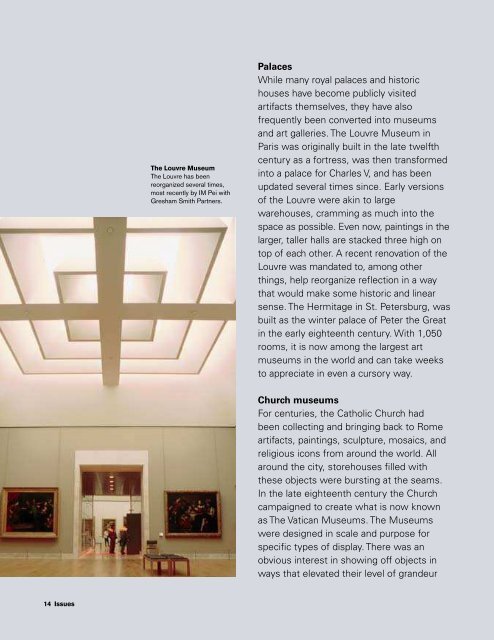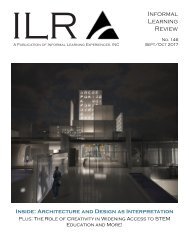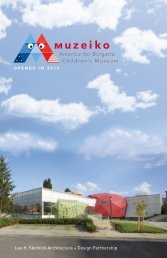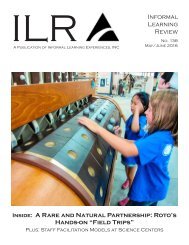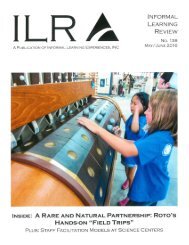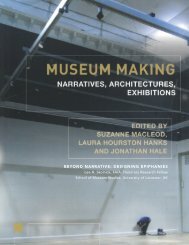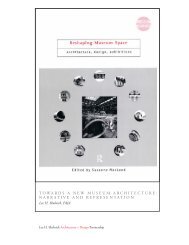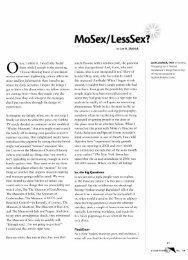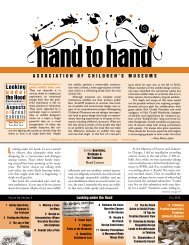070821 LHS_WIED.PDF
- No tags were found...
Create successful ePaper yourself
Turn your PDF publications into a flip-book with our unique Google optimized e-Paper software.
The Louvre Museum<br />
The Louvre has been<br />
reorganized several times,<br />
most recently by IM Pei with<br />
Gresham Smith Partners.<br />
Palaces<br />
While many royal palaces and historic<br />
houses have become publicly visited<br />
artifacts themselves, they have also<br />
frequently been converted into museums<br />
and art galleries. The Louvre Museum in<br />
Paris was originally built in the late twelfth<br />
century as a fortress, was then transformed<br />
into a palace for Charles V, and has been<br />
updated several times since. Early versions<br />
of the Louvre were akin to large<br />
warehouses, cramming as much into the<br />
space as possible. Even now, paintings in the<br />
larger, taller halls are stacked three high on<br />
top of each other. A recent renovation of the<br />
Louvre was mandated to, among other<br />
things, help reorganize reflection in a way<br />
that would make some historic and linear<br />
sense. The Hermitage in St. Petersburg, was<br />
built as the winter palace of Peter the Great<br />
in the early eighteenth century. With 1,050<br />
rooms, it is now among the largest art<br />
museums in the world and can take weeks<br />
to appreciate in even a cursory way.<br />
Church museums<br />
For centuries, the Catholic Church had<br />
been collecting and bringing back to Rome<br />
artifacts, paintings, sculpture, mosaics, and<br />
religious icons from around the world. All<br />
around the city, storehouses filled with<br />
these objects were bursting at the seams.<br />
In the late eighteenth century the Church<br />
campaigned to create what is now known<br />
as The Vatican Museums. The Museums<br />
were designed in scale and purpose for<br />
specific types of display. There was an<br />
obvious interest in showing off objects in<br />
ways that elevated their level of grandeur<br />
so that each piece was seen as a<br />
great work of art or of great significance,<br />
reflecting the power and wealth of the<br />
Church. In large part, this was achieved<br />
through design, with niches, color, and<br />
architectural ornamentation lending the<br />
works tremendous impact as well as a<br />
sense of place and importance. It was an<br />
early example of “design as interpretation”<br />
being harnessed to contextualize and<br />
enhance the display of objects.<br />
The design was meant to<br />
interpret, celebrate, reveal,<br />
and enlighten.<br />
The Capitoline Museum<br />
The Capitoline Museum in<br />
Rome was built around 1734<br />
and features artworks in a<br />
type of domestic setting.<br />
Arranged in the center of<br />
the room as well as the<br />
perimeter, these displays<br />
are less self-conscious than<br />
earlier attempts at similar<br />
presentations. The display of<br />
artifacts is somewhat random<br />
and haphazard, giving space<br />
to each object by putting<br />
them on pedestals, but<br />
certainly not interpreting<br />
them in any contextual<br />
or symbolic way.<br />
The Capitoline Museum<br />
Objects in this museum are<br />
placed on pedestals and<br />
arranged in a haphazard way.<br />
14 Issues A brief history of exhibition design 15


